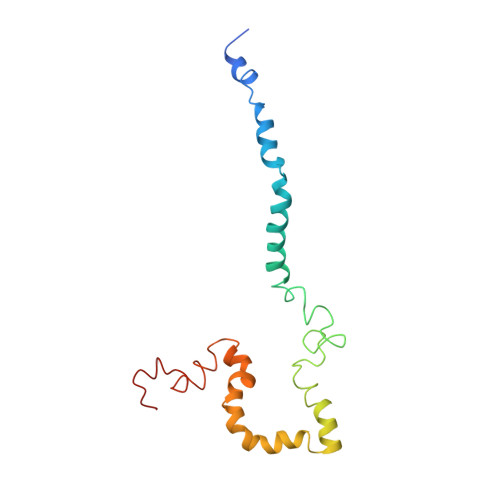SALS-linked WT-SOD1 adopts a highly similar helical conformation as FALS-causing L126Z-SOD1 in a membrane environment
Lim, L., Song, J.(2016) Biochim Biophys Acta 1858: 2223-2230
- PubMed: 27378311
- DOI: https://doi.org/10.1016/j.bbamem.2016.06.027
- Primary Citation of Related Structures:
2NAM - PubMed Abstract:
So far >180 mutations have been identified within the 153-residue human SOD1 to cause familial amyotrophic lateral sclerosis (FALS), while wild-type (WT) SOD1 was intriguingly implicated in sporadic ALS (SALS). SOD1 mutations lead to ALS by a dominant gain of cytotoxicity but its mechanism still remains elusive. Previously functional studies have revealed that SOD1 mutants became unexpectedly associated with organelle membranes. Indeed we decoded that the ALS-causing truncation mutant L126Z-SOD1 with an elevated toxicity completely loses the ability to fold into the native β-barrel structure but acquire a novel capacity to interact with membranes by forming helices over hydrophobic/amphiphilic segments. Very recently, the abnormal insertion of SOD1 mutants into ER membrane has been functionally characterized to trigger ER stress, an initial event of a cascade of cell-specific damages in ALS pathogenesis. Here we attempted to understand the mechanism for gain of cytotoxicity of the WT SOD1. We obtained atomic-resolution evidence that the nascent WT SOD1 without metalation and disulfide bridge is also highly disordered as L126Z. Most importantly, it owns the same capacity in interacting with membranes by forming very similar helices over the first 125 residues identical to L126Z-SOD1, plus an additional hydrophobic helix over Leu144-Ala152. Our study thus implies that the WT and mutant SOD1 indeed converge on a common mechanism for gain of cytotoxicity by abnormally interacting with membranes. Moreover, any genetic/environmental factors which can delay or impair its maturation might act to transform SOD1 into cytotoxic forms with the acquired capacity to abnormally interact with membranes.
Organizational Affiliation:
Department of Biological Sciences, Faculty of Science, National University of Singapore, Republic of Singapore.














